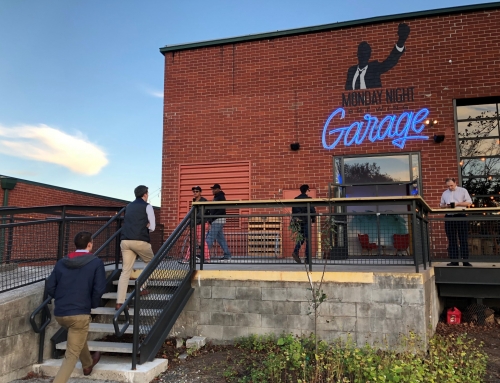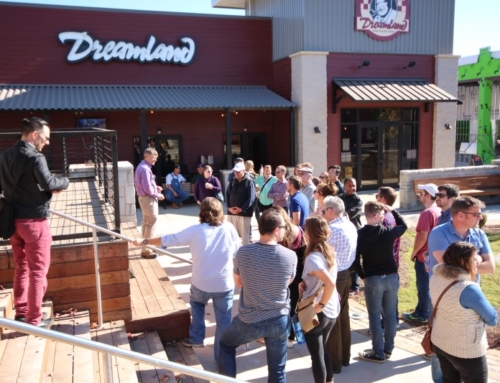Downtown Woodstock Grows Up
The Atlanta Journal Constitution ran a story on the growth of Woodstock Georgia. TSW designed the Hedgewood project, created the Downtown Master Plan, and prepared the city’s zoning code.
No longer a country town: Vertical development makes Woodstock downright citified
By Chrisophter Quinn
Atlanta Journal-Constitution
01/20/07Dan Thornton laughs when asked if he thought he would ever use the words “Woodstock” and “urban” in the same sentence.
“No,” says Thornton, who has sold real estate in the area for 20 years. “It was one of those little country towns kind of out there not long ago.”
“Little country town” no longer applies to Woodstock.
In 1980, it had 2,699 residents and a downtown that had changed little since the 1930s.
Today, Woodstock’s population is estimated at 20,000 — and growing steadily. And the little historic Main Street is being dwarfed by new development.
On 32 acres on the east side of Main Street, a massive five-story project, featuring condos over retail shops, is near completion. Directly behind that project, more than 200 tightly packed townhouses and single family homes, some priced at more than $500,000, have been selling rapidly.
Plans are in the works for more than 300 additional acres of pricey executive homes and dense mixed-use development in town.
Long-time residents like seeing their little town spring back to life. But they don’t like some of the side effects, such as car-clogged roads.
Becky Wentzel, the owner of Hot Dog Heaven in one of Woodstock’s older buildings on Main Street, slings dogs, sandwiches and smoking hot french fries to a steady stream of customers. Wentzel said she is no longer surprised when native Chicagoans, now living nearby, stop in for one of her Chicago-style hotdogs.
The growth is fueling her booming business, but she doesn’t want Woodstock to lose it’s first-name, friendly ambiance.
“I definitely will keep the hometown feel as long as they don’t want to change us and try to make us into something more cool,” Wentzel said. “I think we are kind of cool being old-fashioned.”
But “cool” might be inevitable. The Atlanta Regional Commission named the city the Development of Excellence in 2006 for its style, good planning and smart use of existing infrastructure.
George McGrath and his wife Nellie, formerly of Roswell, began looking last year for something other than a cookie-cutter neighborhood. They searched metro Atlanta’s north side with no luck.
“Then my wife drove me to Woodstock. But I thought she was crazy,” George said.
He quickly changed his mind when he saw restaurants, shops, the town square where concerts and festivals are held, and the old Ace Hardware, all within sight of their new home.
“The barbershop opens at 7 a.m. I love that,” he said.
Polly Kullmann moved last year from one of the Cherokee County’s sprawling subdivisions into a three-story townhouse off Main Street. Kullmann was looking for the convenience of shopping within walking distance.
“As I get older, I might get to the point that I may not be able to drive at night,” 71-year-old Kullmann said.
“It’s wonderful,” she says of the new downtown, “even though there’s a lot of mud.”
Woodstock’s makeover is mainly the result of a few factors: available land, the vision of city leaders and developers’ recognition that people want to live in small urban settings.
Until three years ago, Woodstock featured older homes built on large lots. On the edge of town were some huge parcels, remnants of family farms.
Development company Hedgewood Properties was looking for a new downtown project when a company employee, who lived in Woodstock, pointed out all the available acreage in the city. The company put together a few tracts, totalling 32 acres, east of Main Street. Last year the company bought another 32 acres on the west side of Main Street for more mixed-use development. Initial plans call for more than 400 homes, apartments and retail sites.
Hedgewood’s success and the town’s work has attracted others to the area.
A few blocks north, Toll Brothers, a luxury homebuilder, has plans for 300 homes on 195-acres of horse pasture.
Just south of downtown, the 87-acre Breezy Hill horse farm is under contract with more mixed-use construction planned.
Lots in between the farms are up for grabs. One new infill development will have 32 craftsman style homes on five acres.
Thornton has several properties listed, from 2 to 15 acres, on or near Main Street.
Land values have surged in the last decade, and doubled in last three years, he said. Land in the city brings $200,000 an acre, unimaginable 10 years ago.
“It’s selling well and will continue selling,” Thornton predicted. “
[The high density] is in demand and will continue to be in demand. People want to live in an urban setting rather than being scattered all over the place.”
The growth is bringing new pains with it.
Woodstock implemented a sewer moratorium for a few months in 2003 until treatment capacity caught up to the growth.
City leaders hope to piece together a grid of new streets on developing tracts to provide some traffic relief.
And the city has a new problem to solve.
Councilman Randy Brewer, who lives on Main Street, said Woodstock had very little housing worth more than $300,000 when he was elected in 2001. He wanted to change that. Town leaders with an eye on the future rewrote zoning ordinances to allow mixed use and high density, which some residents opposed. The council set new architectural standards.
They won a grant from the Atlanta Regional Commission that helped them create a master plan for downtown. It helped attract the new high-dollar growth the town wanted.
Now, with older homes being bulldozed for new growth, the city may have to act to maintain a balance of affordable homes for teachers, firemen and service workers, Brewer said.
“That is something we may definitely have to look at this year,” he said.





